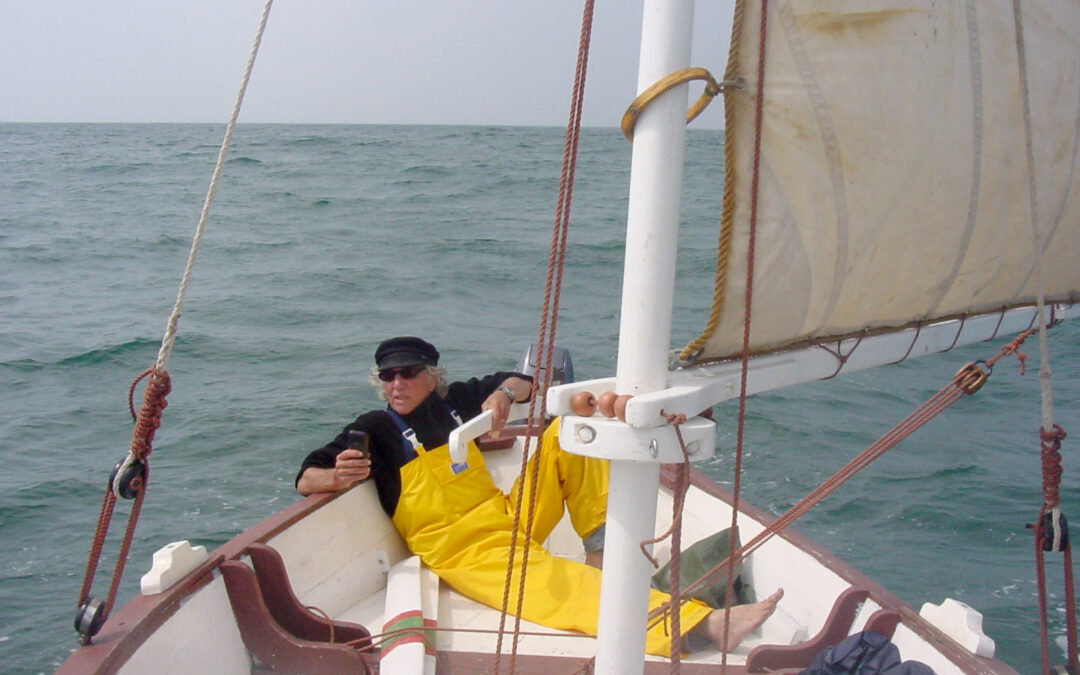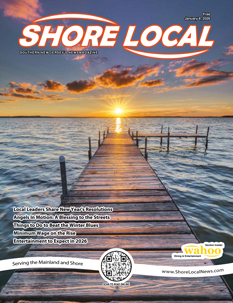Part 2 of a 3-part series on the life of Chris Gilmore
For three winters, I lived in a $5-a-night hotel in Essaouira, Morocco, next to Chris Gilmore and his wife, Anita. Essaouira is an ancient city first visited by the Phoenicians around the first century B.C. They came to extract purple dye from shells found on the Island of Mogador, just a half mile offshore.
Next to the port is the medina, a walled city packed with apartments, kasbahs, markets, mosques, cafés and restaurants. Because motor vehicles are not allowed, its narrow streets resemble alleys. Walking through the medina felt like stepping into a chapter from The Arabian Nights. It seemed nothing had changed there in centuries. The city’s ramparts and architecture are so picturesque that they have served as backdrops for many films and television series, including Game of Thrones.
Chris was something of a celebrity in Essaouira, thanks to his 18-foot wooden sloop, the Rubáiyát. He spent 12 years building the boat—mostly in the lobbies of two hotels. The locals admired him for his unwavering determination. By the time I arrived, the boat was nearly finished and had been moved to the port.
Working and sailing aboard the Rubáiyát was an electrifying experience. The waters around Essaouira are clear and blue, with the white walls of the city forming an exotic backdrop. It was also risky. There was no Coast Guard to rescue us if something went wrong. The port officials had given Chris a phone number to call in emergencies, but no one ever answered when we tried it. We hoped the nearby fishing boats would help if necessary.
Chris was always in good spirits at sea, even though we soon learned that Rubáiyát didn’t sail very well. The problem was her experimental hull design. The keel was made of two long blocks of wood, which made it easy to drag the boat around the port—but not so great for open-water sailing.
One day, we decided to test her maximum sailing speed. We motored into a steady wind, hoisted the sails, and turned off the engine. Chris caught the breeze and checked our handheld GPS. Despite adjustments, the highest speed we reached was 3.5 mph. Tidal surges often move faster than that, so from then on, we kept the engine running at all times.
One hazard we frequently encountered were the fishing nets around the Island of Mogador. Moroccan boats passed over them easily, but they tangled with our keel and often wrapped around the propeller. After a few harrowing moments spent cutting netting off the engine in six-foot seas, I began keeping a careful bow watch.
There was one day in particular that turned dangerous. A soft south wind was blowing—the kind that often brings rain—but the sky was clear, so we headed to the west side of Mogador, which faces the open sea. Oddly, there were only a few boats out; normally, more than 50 would be fishing for octopus and sea bass. Still, we continued south.
We avoided the southern fishing nets, but then dark clouds appeared on the horizon.
“Chris, do you see those clouds?” I asked.
“I sure do, matey,” he replied. “They seem pretty far off, but we’d better be on the safe side and head for home. Get ready to come about.”
As we turned the boat, the south wind picked up to 10 mph—then quickly jumped to 25. The clouds closed in.
“Looks like we may be in for a squall!” Chris shouted. “Let’s get the sails down and stowed.”
I took in the jib first and started on the mainsail. Just as it was halfway down, a gust of 35 mph lurched the boat. Chris jumped up to help, and together we secured the sail to the boom. Then the storm hit. Rain and wind pounded the boat. Visibility dropped to zero. Waves splashed over the port side as the boat rocked violently. I stood frozen next to the boom, terrified.
“Matey!” Chris yelled. “Look alive!”













